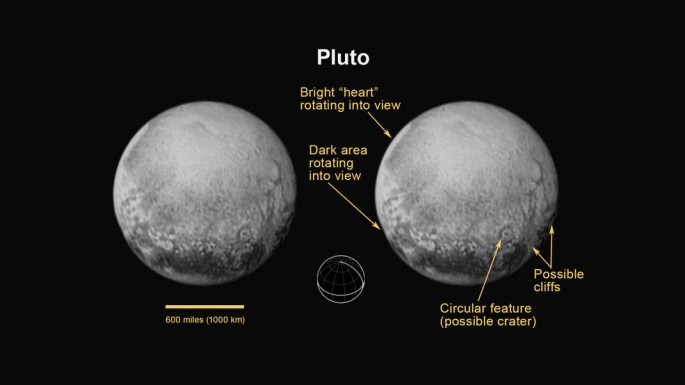Pluto's mysterious spots are now becoming more puzzling as NASA's New Horizons spacecraft continues to zoom in closer to the dwarf planet, with only one million miles away to go.
This latest image from NASA puts Pluto's mysterious dark features into focus, that consist of spots that are found lined up in the equatorial region. Each of these spots measure 300 miles across where they are placed equally along a darker belt that encircles the surface of the planet.
New Horizons first observed these spots some weeks ago where mission scientists are baffled by their existence. According to principal investigator for New Horizons, Alan Stern, this is a real puzzle and nobody knows what those spots are.
To date, mission scientists still have no idea about the origin of these spots. However, these new images were taken some 2.5 million miles away reveal that the outer lining of the spots are not as sharp and are irregularly shaped. Scientists believe that these features were formed via more complex processes than previously thought.
According to New Horizons team's Jeff Moore from NASA's Ames Research Center in California, there's no way to tell if these features are plateaus or plains or maybe they possess some brightness variations on a uniform, smooth surface.
Also according to mission program scientist, Curt Niebur of NASA headquarters in Washington D.C., the placement and the position of these spots are rather perplexing too. He adds that the regular spacing between each other is really bizarre.
The New Horizons team will finally get their answers when the probe conducts its epic flyby tomorrow, July 14 at 7:49 A.M. EDT. The spacecraft will zoom past at 36,000 miles per hour over the spotted features of the planet where it will be also facing its moon Charon from a distance of 7,800 miles.
Stern says that this photo is the last and possibly the best view of anyone of Pluto's far side for decades to come.





















